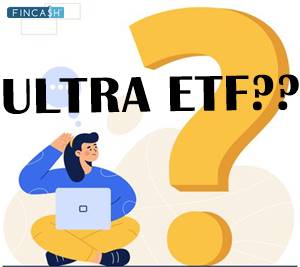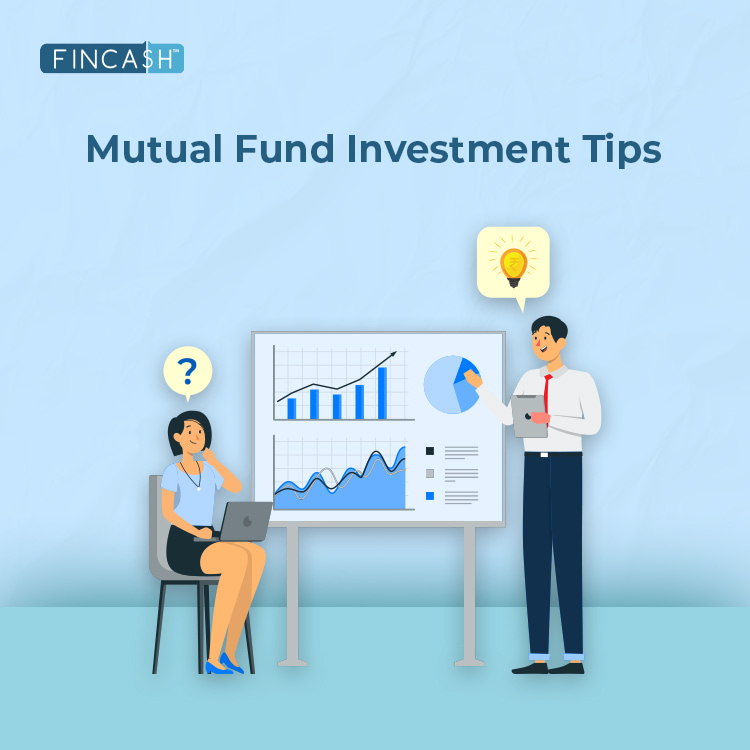10 Exchange-Traded Funds (ETF) Concerns To Know Before Investing
Exchange-Traded Funds (ETFs) offer a straightforward entry into Investing. They can be acquired and managed in diverse ways suitable for Economic Conditions. Understanding these strategies is crucial for mitigating risks and sustaining profitability across Market fluctuations.

If you’re a young investor eager to learn, you may often encounter typical novice mistakes like overanalysing investment options. Not just that, you may also need more clarification on which investments are excessively risky. Therefore, it's essential to grasp the essence of ETFs and be aware of common pitfalls. In this post, let’s understand some ETF concerns you shouldn’t overlook.
What Exactly is an ETF?
An ETF allows you to purchase a diversified Portfolio of Bonds or stocks in a single transaction. When you buy shares of an ETF, the pooled funds are used to invest in a specific manner. For example, investing in an S&P 500 ETF means buying into the 500 companies comprising the index.
10 ETF Concerns That Investors Shouldn’t Overlook
While ETFs may seem enticing, they carry risks similar to stocks and Mutual Funds. Additionally, there are specific risks unique to ETFs as well that you should be wary of. Here's an examination of the ten flaws of ETFs that you should be aware of and avoid overlooking.
Lack of Liquidity
liquidity is crucial for any ETF, stock, or publicly traded asset. It ensures there is sufficient trading interest so that you can sell your investment quickly without significantly affecting its price. Depending on your position’s size relative to the average trading volume, exiting an ETF with low trading activity can take time and effort. Wide spreads between the bid and ask prices are clear indicators of illiquidity. Before purchasing a specific ETF, ensure it has adequate liquidity by closely monitoring spreads and market activity over weeks or months.
Leveraged ETFs
Investors seeking lower risk often favour ETFs than other investment vehicles. However, it's important to note that specific ETF categories carry substantially higher risks than others despite their appeal in managing Volatility. A prime example is the leveraged exchange-traded fund. Due to daily resets, these ETFs may experience Depreciation over time, even if the Underlying index performs well. Many experts caution against investing in leveraged ETFs and may advise avoiding them if possible. If choosing these instruments, you should diligently monitor your investments and fully understand the associated risks.
Talk to our investment specialist
Commission and Expenses
ETFs offer a crucial benefit by trading similarly to equities. An ETF is a fund that invests in a group of companies typically tied to a common Industry or sector. Investors buy ETFs to gain exposure to a diversified portfolio in a single transaction. Since ETFs trade like stocks, you can buy and sell them during market hours and use advanced order types like limits and stops. In contrast, purchasing a regular mutual fund occurs after the market closes once the fund's Net Asset Value is determined.
Similar to stocks, buying or selling ETFs typically incur commissions. These trading costs can accumulate quickly depending on how frequently you trade ETFs, potentially eroding your investment returns. Comparatively, no-load mutual funds do not charge fees or sales charges upon purchase, making them an appealing alternative. When weighing ETFs against mutual funds, it's crucial to consider these trading expenses.
When selecting between similar ETFs and mutual funds, it's essential to understand the different fee structures, including trading fees. You should also be mindful of the ETF's expense ratio, which represents the percentage of the fund's assets used annually to cover various operational expenses. While not directly charged to the investor, a higher expense ratio can reduce overall returns. ETFs are often recognised for their notably low expense ratios compared to many other investment vehicles, a critical Factor for investors evaluating potential ETF investments.
Portfolio Risks
While ETFs are commonly used to diversify passive portfolio strategies, this is only sometimes the case. Every portfolio carries inherent risks, from market volatility and political to operational risks. With a wide array of speciality ETFs available, investors can diversify risk across different sectors and mitigate overall portfolio risk.
Investing in single-country funds increases exposure to political and liquidity risks. Leveraged ETFs amplify potential gains and losses, increasing investment risk if the underlying assets perform poorly. Furthermore, frequent trading in ETFs can disrupt Asset Allocation, heightening overall market risk. The ease of trading ETFs and accessing specialised products sometimes leads you to overlook the importance of managing portfolio risk. This oversight often becomes apparent during market downturns, which may be too late to prevent significant losses.
Capital Gains Distribution
Occasionally, an ETF may distribute Capital gains to its shareholders. However, this may only sometimes be advantageous for ETF holders as they are responsible for paying Capital Gains tax on these distributions. Instead of distributing capital gains and potentially increasing tax obligations for investors, the fund could reinvest gains for productive purposes.
Typically, investors prefer to reinvest their capital gains distributions, necessitating additional transactions through their brokers and incurring associated costs. Since different ETFs Handle capital gains distributions differently, it can be challenging for you to monitor and manage your tax implications effectively.
Loss of Tax Efficiency
Compared to purchasing individual stocks directly, investing in an ETF with a diversified portfolio may limit specific options for investors. One significant disadvantage is the inability to engage in tax-loss harvesting. When the price of a stock declines, an investor can sell it at a loss to Offset capital gains and reduce taxable Income. ETF investors have different flexibility because the ETF manages its portfolio composition. You cannot selectively sell individual stocks; you can only buy or sell shares of the entire ETF, which includes multiple companies.
ETF Premium
Similar to stocks, the price of an ETF can sometimes diverge from its underlying value. This can lead you to pay a premium over the actual worth of the stocks or commodities held within the ETF portfolio when purchasing it. While this situation typically corrects itself over time, it's essential to recognise it as a potential risk factor when buying or selling an ETF.
Price Discovery
Some analysts express concern about a future scenario where most investment shifts towards passive index investing through ETFs. In such a scenario, price discovery for individual securities within an index could become less efficient. If most investors hold ETFs and do not actively trade the underlying stocks, there might be insufficient market participants setting prices for the individual equities. In extreme cases, if everyone solely holds ETFs, the market's ability to price individual stocks could be compromised, potentially leading to market instability.
Rupee-Cost Averaging vs. Lump-Sum Investing
The importance of broker commissions has diminished with the rise of no-fee ETFs in recent years. Lump-sum investing allows investors to deploy their entire investment at once, which can be advantageous in a rising market but risky when it appears overvalued or volatile. Alternatively, rupee-cost averaging involves dividing your investment amount, such as ₹5,000 or ₹10,000, into equal monthly instalments. This method can be beneficial during market downturns or volatility, reducing the risk of investing a large sum at a single unfavourable time. However, rupee-cost averaging may result in an Opportunity Cost if the market consistently rises while only a portion of your funds are invested monthly. It's important to note that even minimal commissions can accumulate with repeated purchase orders, impacting overall returns unless your brokerage offers commission-free trades.
Underlying Fluctuations and Risk
Much like mutual funds, ETFs are often lauded for their diversification benefits. However, it's crucial to understand that the presence of multiple underlying positions in an ETF does not guarantee immunity from volatility. The extent of the fund's diversification largely determines its susceptibility to significant fluctuations. For instance, an ETF tracking a wide Market Index such as the S&P 500 is generally less volatile than one focusing on a specialised industry like an oil services ETF. Therefore, understanding the ETF's focus and the types of assets it holds is essential.
In the case of international or global ETFs, factors such as the country's economic condition being tracked and its currency's stability are critical. Economic and social volatility within a specific country or region can significantly impact the performance of an ETF invested there. These factors must be carefully evaluated when assessing the viability of an ETF.
Safety of ETFs
There is a common misconception about the safety of ETFs, which only holds across the board. While many ETFs are adequately diversified baskets of equities or assets, some invest in high-risk sectors or employ strategies like leverage. For example, a leveraged ETF tracking commodity prices may exhibit higher volatility and carry greater risk than a stable Large cap fund.
Minimum Investment Requirement
ETFs do not have the exact minimum investment requirements as mutual funds. They trade on a per-share Basis, and unless your broker supports fractional share purchases, you'll need to invest in at least one full share to initiate a position.
Conclusion
Understanding the risks associated with ETFs empowers investors to make informed financial decisions. While ETFs have gained popularity for good reasons, they have drawbacks. Like any investment, being well-informed about all aspects of ETFs is crucial. Awareness of potential pitfalls can help mitigate risks and lead to capital appreciation.
All efforts have been made to ensure the information provided here is accurate. However, no guarantees are made regarding correctness of data. Please verify with scheme information document before making any investment.












